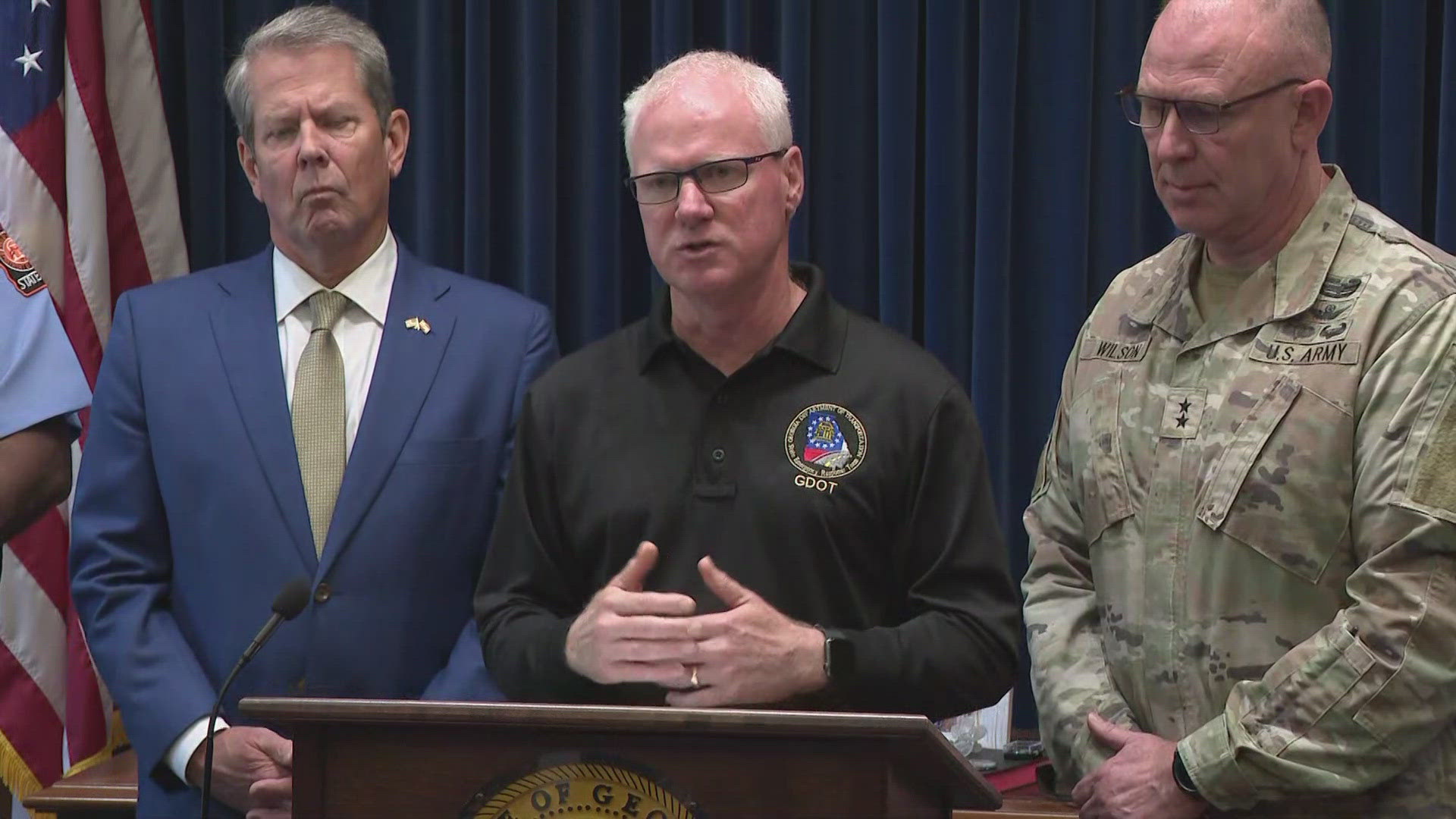GEORGIA, — The Georgia Department of Transportation (GDOT) is working tirelessly to restore roadways and traffic infrastructure impacted by Hurricane Helene, according to GDOT Commissioner Russell McMurry on Thursday.
In a briefing alongside Georgia Governor Brian Kemp, McMurry outlined the department's progress and ongoing challenges as crews continue to clear routes across the state.
"Our first priorities are always high-priority routes, but now, this is a statewide event. We are working with all the counties in the affected area," McMurry said.
At the peak of the storm, more than 300 state routes, including three major interstates, were blocked and impassable. As of Thursday, GDOT has cleared most of the priority routes, reducing road closures to only a few locations still obstructed by power lines.
Key updates on GDOT’s Hurricane Helene recovery efforts:
Statewide Response: The storm affected 32,000 miles of roads in 41 declared counties, with additional impacts in surrounding areas. GDOT deployed 2,000 employees to cover all 159 counties across Georgia, prioritizing interstates, state routes, and critical access roads leading to hospitals, schools, and energy production sites.
Current Road Conditions: Most state and interstate routes have been made passable, but McMurry cautioned drivers to remain vigilant. "Roads are not fully open, even though all lanes appear to be open," he said, noting that trees and debris may still be close to the pavement. He urged drivers to remain defensive and alert to changing road conditions.
Traffic Signals and Safety Concerns: Hurricane Helene damaged or disabled about 252 traffic signals, with around 106 signals in Augusta, Richmond, and Columbia Counties requiring complete replacement. McMurry emphasized caution when approaching non-functioning signals and reminded drivers to treat them as four-way stops.
Signs Replacement and Visibility Issues: GDOT has replaced more than 2,600 critical signs, including stop and yield signs, but thousands remain missing. McMurry urged drivers to be cautious and treat familiar intersections as if signage is still in place.
Support for Local Counties: GDOT has contracted 50 consultant and contractor crews to assist in the hardest-hit counties. Teams are coordinating with local officials to restore city streets and county roads, aiming to push debris back from the white line to the white line to ensure safe vehicle passage.
Hurricane Helene GDOT recovery plans moving forward
While significant progress has been made, full recovery remains out of reach. GDOT crews focus on restoring full access and safety to the remaining blocked routes. In the meantime, McMurry urged residents to limit non-essential travel and allow power and cleanup crews the space they need to work safely.
"We're still having trees fall and with the power line works, sometimes they have to take trees out and then block a road again," McMurry said. "So we need to ask everybody to still remain vigilant and remain as a defensive driver because you never know what's gonna be right around the corner."
GDOT advises checking its website and social media channels for updates on road closures and detours. Motorists should also report any new road hazards to GDOT’s emergency hotline.

